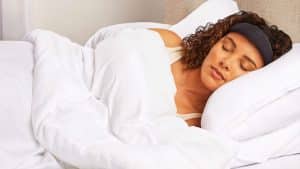The nights get longer and darker. The weather gets colder and colder, possibly accompanied by the wild wind and driving rain. Perhaps it’s not surprising that many people struggle to cope with the change of the seasons. SAD really is the best acronym for seasonal affective disorder, but it doesn’t tell you how to manage this tricky condition.
Depression comes in many forms, and with a complex mix of causes. SAD can be easy to miss. If you feel a bit low during the winter months, it may not seem like a big deal. You could feel that it’s natural and will go away once the weather brightens, but that ignores the very real impact it may have on your life.
(SAD is most often associated with depression in the darker, colder parts of the year, but some people do experience it when they receive too much light and sun during the summer.)
Many of the recommendations for someone suffering from SAD are similar to if you have another form of depression. Plenty of endorphin-boosting physical exercise and a diet full of all the most important nutrients are a good start. Things like switching off digital devices and giving yourself time to wind down before going to sleep, plus ensuring that your bedtime is consistent every day, can help stabilize and regulate everything from your hormones to your mood. Resist the urge to isolate, and try to connect with friends and family for emotional support.
Some people take melatonin supplements to alleviate SAD. Others turn to that old staple, cognitive behavioral therapy, which can help you identify troublesome thoughts and develop coping strategies. Then there’s grounding, an old technique that involves getting yourself physically connected to the earth without all those barriers of the modern world. It’s a way of getting back to nature and feeling the benefits of the earth’s natural electrical charge.
One of the most specific forms of treatment for SAD is light therapy. This may mean standing outside at noon to feel the benefits of the sun (remember, spending time outdoors is vital for health), or maybe even using artificial light sources on as close a wavelength as possible to sunlight.
Some of these methods are things you can do yourself at home, but if you’re really struggling, you may need to consult with a medical professional.




